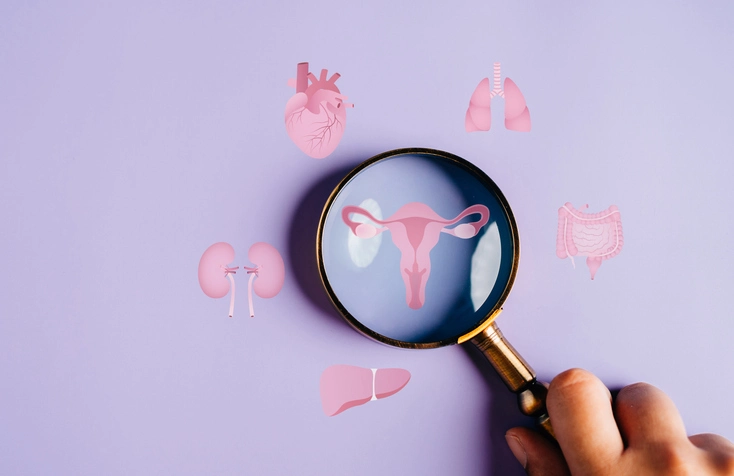Acknowledgements
I acknowledge the elders, customs and traditions of the Jagera and the Turrbul, from both sides of the Maiwar and all First Nations people present today.
I would like to thank Griffith University Law Futures Centre for inviting me to provide opening remarks ahead of the lecture by Assistant Professor Anthony Rosborough.
I thank Professor Leanne Wiseman for organising this event and bringing everyone together – including students, researchers and policymakers – to consider the right to repair through the lens of competition policy and market power. Having had the pleasure of speaking at your 2022 Australian Repair Summit, it’s terrific to be joining you again.
To those of you attending today, I thank you for advocating on behalf of Australian consumers and business.
Repairing competition
This year marks the 50th anniversary of Australia’s ground‑breaking Trade Practices Act 1974 (now the Competition and Consumer Act 2010) and establishment of the Trade Practices Commission – the forerunner to the Australian Competition and Consumer Commission (ACCC).
The first Chairman of the Trade Practices Commission, Ron Bannerman, was a famously frugal man.
According to one of his colleagues, ‘Many a Trade Practices Commission officer lay low in their Commonwealth car at airports as the car sped past Bannerman who was walking to the bus stop carrying his suitcase’ (ACCC 2014).
Born in 1921, Bannerman was a ‘make‑do and mend’ type of person, representative of the generation that lived through the Depression and World War II.
And that is why if he was still with us, I think he would be a proponent of the right to repair movement.
Namely, the right to access easier and cheaper options to repair products that are technically repairable.
Consumers, cars and complexity
Breakdown is normal and often inevitable. So too, is the human impulse to fix things.
Fifty years ago when a car broke down, the repair process would usually involve lifting the hood, getting hands‑on and doing it yourself.
But today’s cars are computers on wheels, managed by electronic control units and millions of lines of code.
Fixing them requires real time access to complex and unique data.
And that is why we needed to intervene with a right to repair.
Australia now has the Motor Vehicle Service and Repair Information Sharing Scheme, which I was pleased to announce in July 2022 as one of my first actions as Assistant Minister for Competition.
The Scheme, which is Australia’s first right to repair law, requires motor vehicle service and repair information to be made available for purchase by Australian repairers at a fair market price.
Prior to the Scheme, one auto‑mechanic told reporters he spent up to $300 a month on data, just to fix certain models of cars (ABC 2019).
Given the Scheme is the first of its kind in Australia, we are monitoring for implementation issues and are committed to ensuring the Scheme remains fit for purpose.
The government will continue collaborating with the automotive sector to ensure Australia has world‑leading right to repair laws.
The repair ‘lock out’
There are set consumer rights to a repair or replacement when a product has a major problem.
But the ever increasing complexity of an increasing number of products is ‘locking‑out’ independent technicians and other manufacturer‑adjacent businesses.
The lock out undermines competition and concentrates power in the hands of original equipment manufacturers.
This includes anything embedded with sophisticated technology – not just cars and farm equipment but our phones, watches, washing machines, medical devices and exercise equipment.
Sometimes, these products are single use (for example, think of batteries and printer cartridges). Quite often, the product is also blanketed by fine print stating that repairs by non‑certified repairers will void the warranty.
The result for consumers is a product ‘lock‑in’. They are channelled into an expensive aftermarket.
The unfortunate side‑effect is that it is often cheaper to replace the whole product than fix a small component.
Leading to tonnes of waste and landfill.
The biennial 2022 National Waste Report found that Australians generate around 3 tonnes of waste per person. That figure was up by 3 per cent compared to the previous report. The report also found that Australia’s recycling rate remains stagnant at 60 per cent. Rates of recycling and recovery are highest for metals (87 per cent) and building materials (81 per cent), and lowest for textiles (21 per cent) and plastics (13 per cent) (DCCEEW 2022, p.xv). We need to pull our weight – and our waste.
For independent technicians and small businesses, the competition ‘lock‑out’ means fewer repair opportunities.
The 2020 High Court matter of Calidad v Seiko Epson relating to Epson printer cartridges found that Australians do have a right to repair under the doctrine of exhaustion as applied to Australian patent law (Calidad Pty Ltd v Seiko Epson Corporation [2020] HCA 41).
The High Court decision was a win for Calidad, which bought old single‑use Epson printer cartridges and refurbished, reprogrammed, rebranded and refilled them (CHOICE 2023). The Honourable Patrick Keane AC, one of the justices in the Calidad case prior to his retirement in 2022, will speak in more detail about the matter after Assistant Professor Rosborough’s lecture.
Better competition, better prices
What I will say about the Calidad matter is that for consumers, it led to better prices.
The original Epson cartridge pack costs $129 while Calidad’s equivalent costs $75 (CHOICE 2023).
Excessive market concentration can also lead to economic problems. We know that dominant firms in a market may have less incentive to carry out R&D and produce new products (Leigh 2022a).
For example, it may lead to a printer company having little to no incentive to create reusable cartridges that are more environmentally friendly and cheaper to buy.
Two recent government reports highlight that vital link between economic dynamism and innovation.
The 2023 Intergenerational Report made the point that, ‘Most Australian businesses adopt innovations created by others.’ It says this underscores the importance of having ‘settings that facilitate the diffusion of new technologies and ideas throughout the economy’ (Leigh 2023).
On 27 March the House Standing Committee on Economics, chaired by Daniel Mulino, delivered their report Better Competition, Better Prices, which focuses on promoting economic dynamism, competition and business formation (Australian Government 2024).
The report emphasises the need to continuously assess competition settings to maintain economic dynamism.
The right to repair movement, increased digitalisation and the net zero transformation present opportunities and challenges.
The opportunities will come from creativity in aftermarkets. They may be similar to the resourcefulness displayed by Calidad in reusing printer cartridges.
The challenges will continue coming from the notion of ‘creative destruction’ brought about by the process of old ideas being displaced by new ones (Leigh 2023).
This brings to mind examples such as Fairphone – a Dutch smartphone brand that makes repairable handsets, headphones and earbuds (TechCrunch 2024). Its focus is on reducing e‑waste and giving users more control over repairs.
Or adventure clothing company Patagonia, which encourages its customers to repair clothing rather than throw it away. As well as offering online repair tips, Patagonia has trained its retail staff in conducting simple repairs, and operates one of the largest garment repair facilities in North America.
This sits alongside the important work that my colleague Tanya Plibersek is doing on product stewardship. The Minister’s ‘Priority List’ identifies her current priorities for product stewardship action. Industry is expected to take action for the products on the list. The Minister reviews the list annually to see if the recommended actions have been taken. If action is not taken, the Minister may consider regulating the products which can be more onerous for industry. The list current comprises 5 products: clothing textiles, tyres, plastics in healthcare products in hospitals, mattresses, and child car seats. Meanwhile other items, including single‑use plastics, electronic products and oil containers, have been taken off the list because industry has made sufficient progress to manage the environmental impact.
Closing remarks
In closing, thank you for giving me the opportunity to talk about the right to repair. Done right, with a recognition of intellectual property rights, innovation and public safety, it will save consumers time and money.
Alongside this, our government is advancing an ambitious competition agenda in other areas. This includes revitalising National Competition Policy, holding an Australian Competition and Consumer Commission inquiry into supermarkets, reviewing the Food and Grocery Code of Conduct, progressing merger reforms and reviewing the impact of non‑competes and other worker restraint clauses.
I thank you for your interest in these issues.
I am sure Assistant Professor Rosborough will provide salient insights on Canada’s experience that we can learn from here in Australia.
References
ABC News 2019 ‘Right to repair’ regulation necessary, say small businesses and environmentalists, 3 May 2019.
Australian Competition and Consumer Commission 2014 Celebrating 40 years of making markets work, page 9, 1 October 2014.
Australian Government 2024, Better Competition, Better Prices, 27 March 2024.
CHOICE 2023 Refilling printer cartridges now has legal protection, 3 August 2023.
Department of Climate Change, Energy, the Environment and Water (DCCEEW) 2022 National Waste Report 2022, 16 December 2022.
European Union 2023, Right to repair: Commission introduces new consumer rights for easy and attractive repairs, [media release] 22 March 2023.
Leigh A 2022 Keynote address to the Australian Repair Summit 2022, Canberra, 5 August 2022.
Leigh A 2022 Opinion piece: market power and markups, published in The Australian, 20 December 2022.
Leigh A 2023 Address to International Small Business Summit Melbourne, 22 September 2023.








